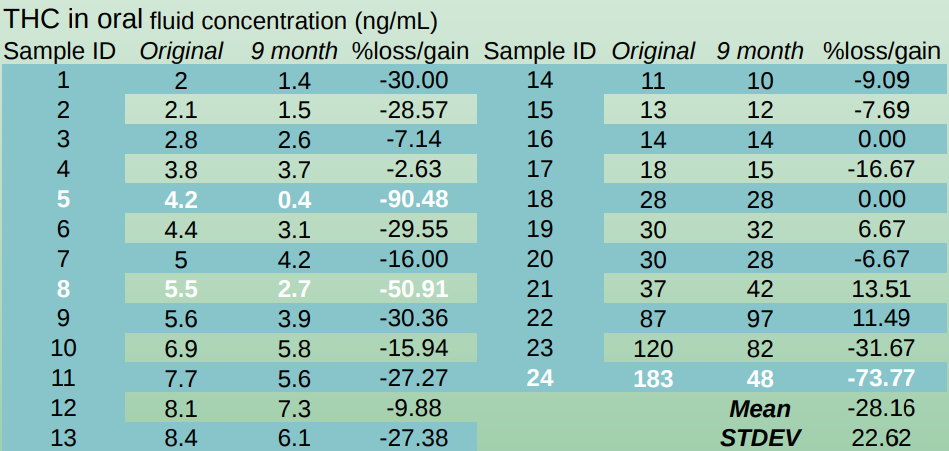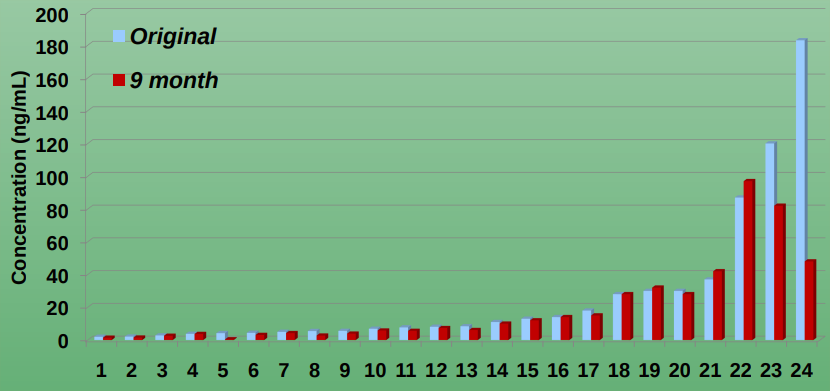Cynthia Coulter 1 , Elizabeth Miller 1 , Christine Moore 1,
Michele L. Merves 2 , Bruce A. Goldberger 2 , Dennis L. Thombs 2 , Robert M. Weiler 2 1
Immunalysis Corporation, Pomona, CA,U.S.A., 2University of Florida, Gainesville, FL, U.S.A.
Abstract
Background: Oral fluid is a useful biological specimen to detect recent usage of drugs and has specific advantages over urinalysis. However, the stability of drugs of abuse in the oral fluid/buffer matrix has not been widely studied.
Sample Collection: In order to assess the epidemiology of alcohol and drug use in a college bar district located in the state of Florida, self-report and biological data were collected from randomly selected and self-selected patrons exiting bars to examine associations between alcohol intoxication level, concomitant drug use, intent to drive a motor vehicle within an hour of study participation, and related behaviors. The protocol was completely anonymous and approved by a University of Florida IRB. Participants provided verbal informed consent. Data were collected from 10:00 p.m. to 2:30 a.m. on four nights in July/August 2007. The participants in the study were mostly men (64.7%) and Caucasian (78.4%) with a reported mean age of 21.9y. To examine drug use, oral fluid specimens were taken using the QuantisalTM collection device, which provides 1mL of neat saliva diluted with transportation buffer (3mL). Specimens were shipped overnight to Immunalysis for testing. Following ELISA screening and confirmation of positives with GC/MS, the specimens were stored at -20°C. Nine months later they were re-tested.
Data Comparison

Stability of THC in Quantisal®

Results and Discussion
Of 456 specimens, thirty-two (7%) were positive for THC; of these, 24 had adequate volume remaining for re-testing. Overall, drug loss for THC varied. Three specimens showed significant loss, (>50%) decreasing from 183 to 48ng/mL in one case; 4.2ng/mL to less than 1ng/mL in the second and 5.5ng/mL to 2.7ng/mL in the third. All other concentrations were within 32% of the original result.
Assessing those as outliers, the mean loss of THC over 9 months was 14.4%. Specimens which appeared to increase slightly in concentration may be accounted for due to analytical variability.
Summary
THC in the Quantisal® oral fluid collection device showed an average decline of 14.4% over the storage period, with some specimens dropping significantly, and others showing no loss at all.
SOFT 2008, Phoenix, AZ
To view the full study and its data, visit this link.
Looking for equipment or accessories for your immunoassay and other related applications? Check out our products below.